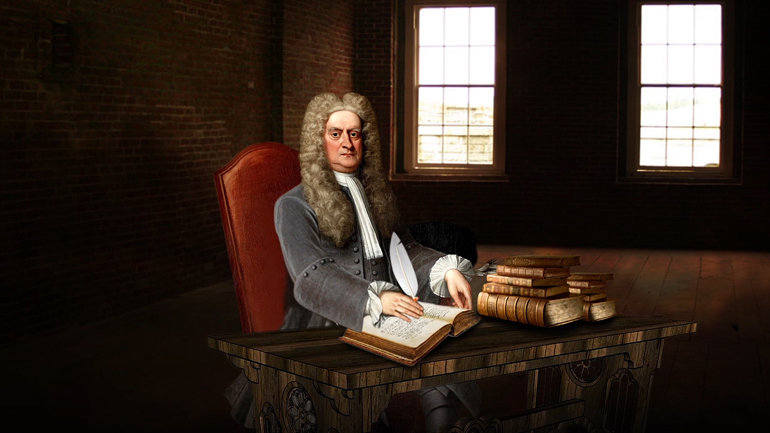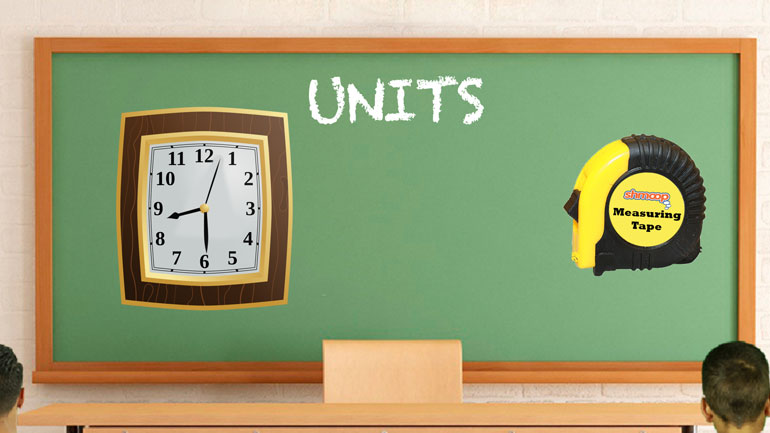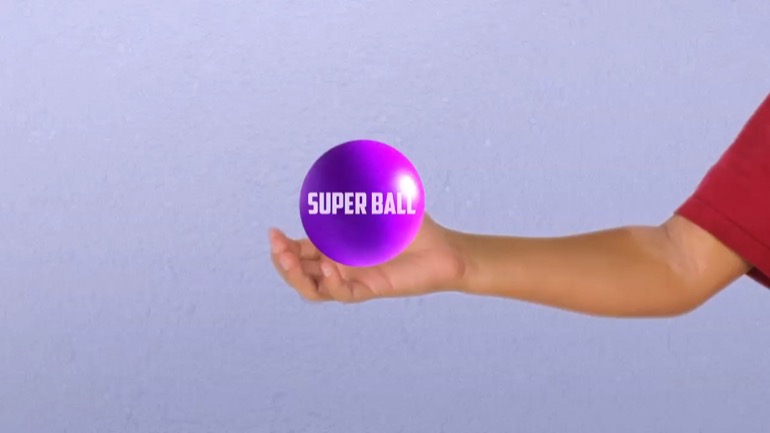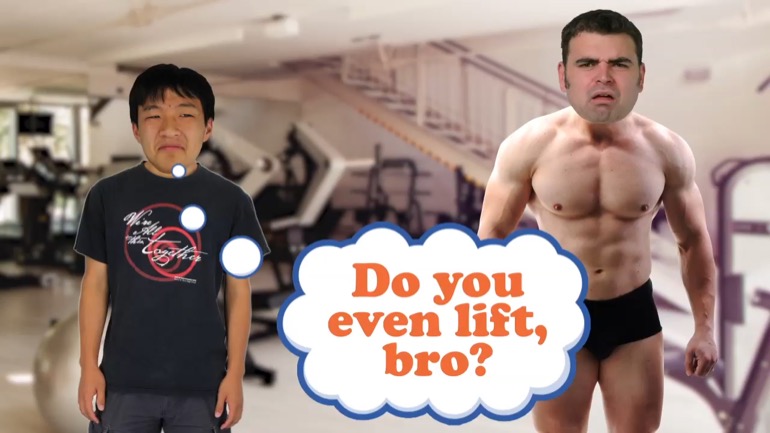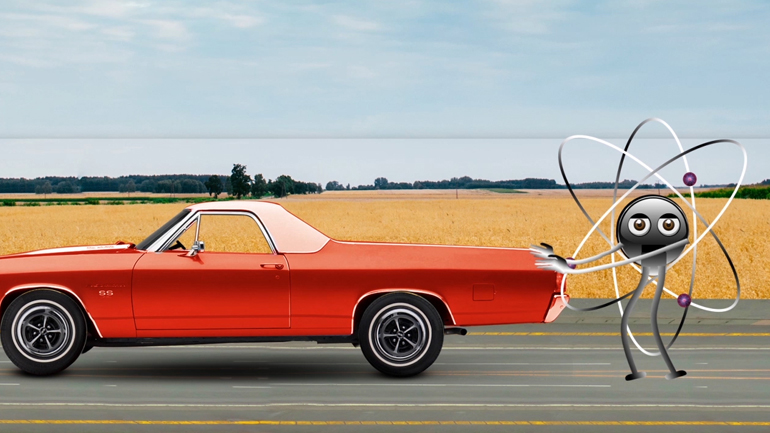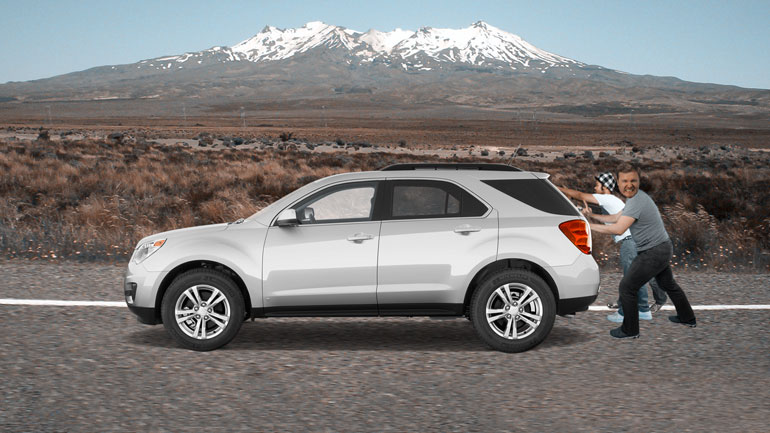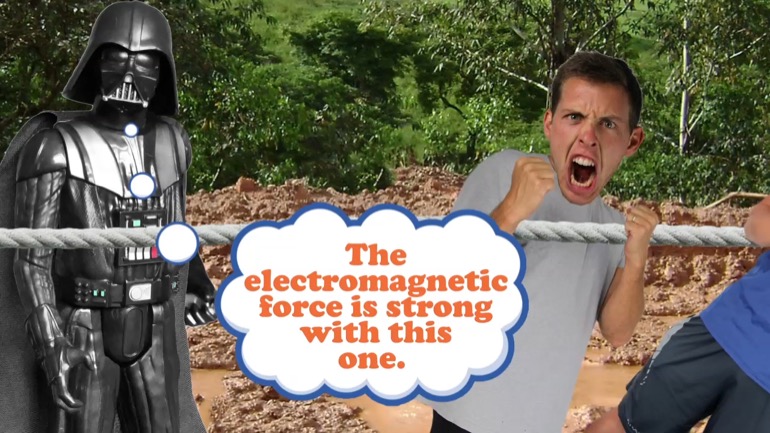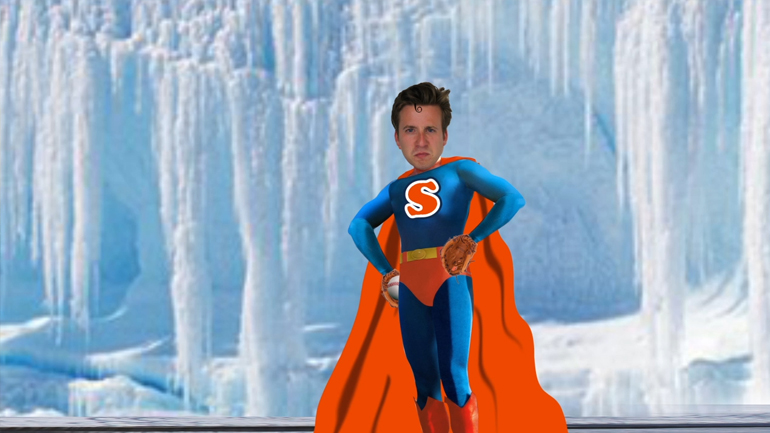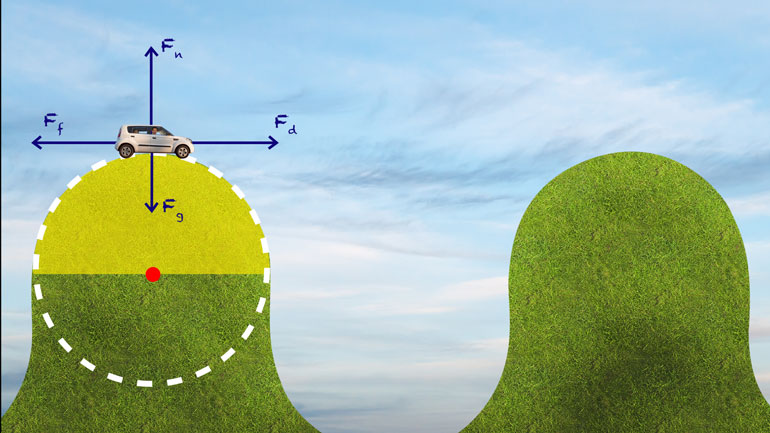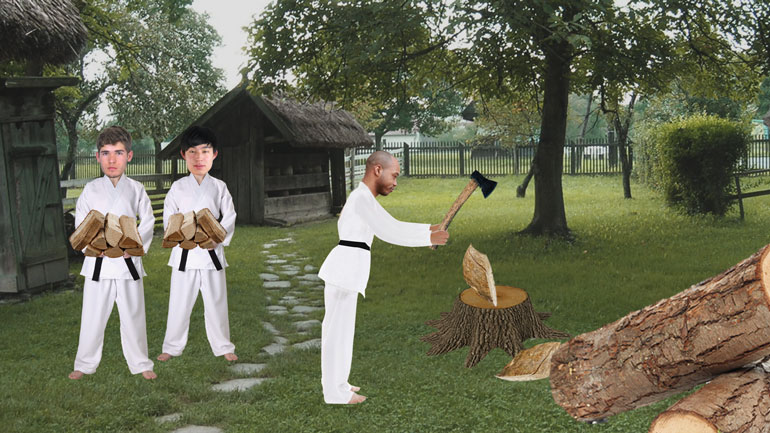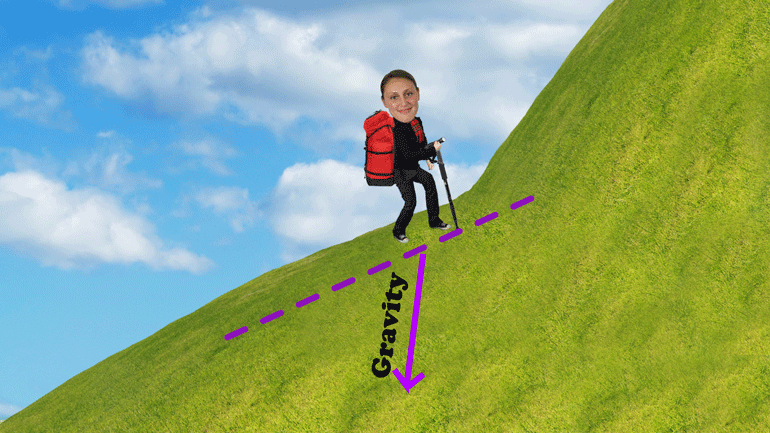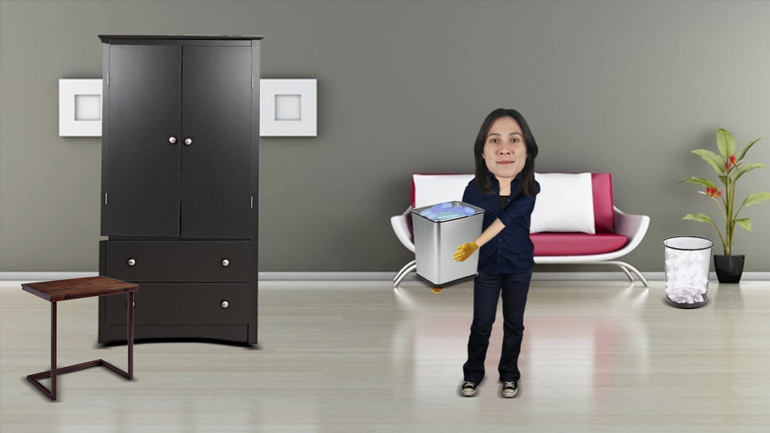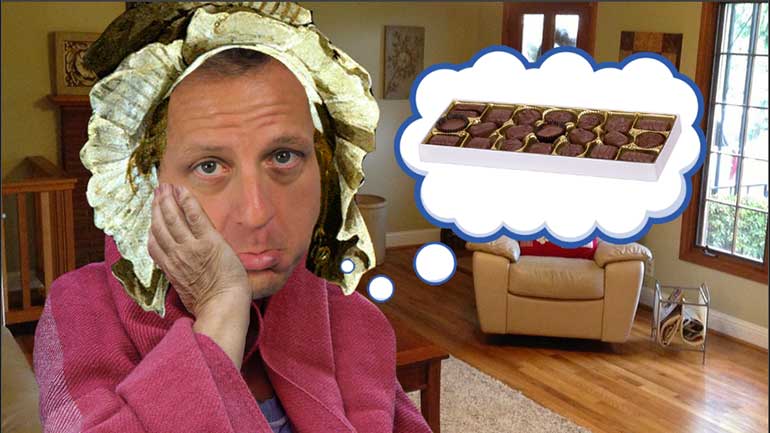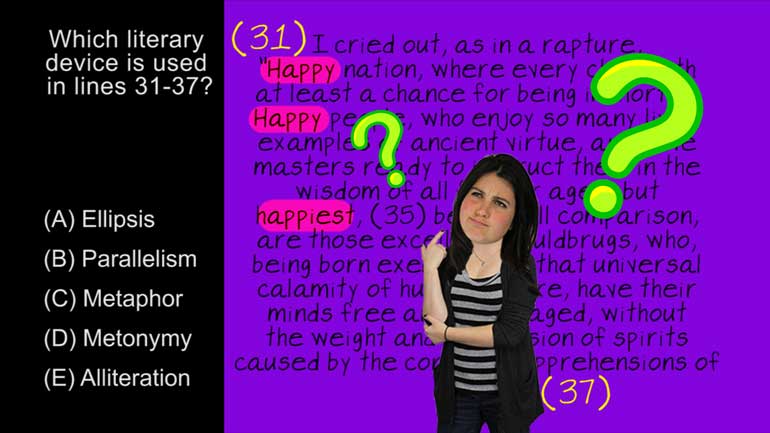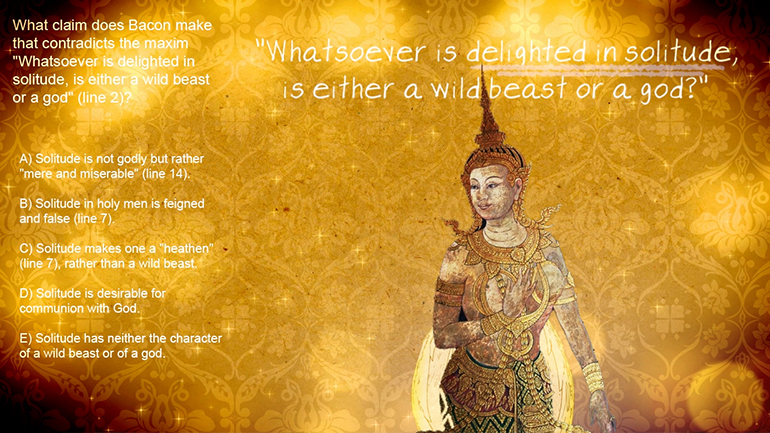ShmoopTube
Where Monty Python meets your 10th grade teacher.
Search Thousands of Shmoop Videos
Physics Videos 34 videos
Isaac Newton. Who was he? Why do we need to know about him? In a physics course, no less? Well, he's only the most famous physicist in history, and...
What are the basics of trigonometry? And why are we learning about this in a physics course? Both good questions. In this video, you'll learn about...
It's time to make our liters and meters work together. Enough of the bickering, right? In this video, we'll do some unit analysis, covering SI Unit...
Physics: The Many Forms of Energy 23 Views
Share It!
Description:
There are many forms of energy. And not just coal, wind, and solar. We'll cover the types, how energy is converted, and the difference between kinetic and potential energy.
Transcript
- 00:00
The many forms of and a couple of equations for energy energy can't be
- 00:37
Energy, pretty important right you might not think too much about energy at least not [Woman appears in room]
- 00:43
until you eat a big bowl of chili for lunch and an hour later you're nearly [Woman eating chili]
- 00:47
comatose that's when you realize how much energy it takes just to get through
- 00:52
the day and that's also when you realize that you should probably start eating [Woman sleeping]
Full Transcript
- 00:56
more salads where did that post lunch energy go did it just dissolve away nope
- 01:02
in fact that's not possible energy can't be destroyed and it can't be created it
- 01:07
can move from one place to another but it always has to be conserved like this
- 01:13
espresso machine it's plugged into the wall drying electrical power and the [Woman points to espresso machine]
- 01:17
machine converts out electricity into mechanical energy pumping water through
- 01:21
the machine it also converts electricity into heat even if you want an iced latte
- 01:26
it always starts off nice and hot and of course espresso machines generates down [Woman making iced latte]
- 01:31
lots of sounds this home that haunts my dreams at night an energy conversion is
- 01:37
also how solar panels work they're able to take light from the Sun and make it [Solar panels on a rooftop]
- 01:42
into electricity and your body is able to take energy from caffeine and turn
- 01:47
that into an eyelid that just will not stop twitching that's just an [Woman takes sip of coffee]
- 01:51
occupational hazard in my line of work maybe I can just have another macchiato
- 01:55
or three and never blink again problem solved there are lots of types of energy
- 02:00
we've already talked about light heat electricity and sound oh and mechanical [Types of energy appear]
- 02:04
energy along with kinetic it's easy to mix up mechanical energy and kinetic
- 02:09
energy they both involve things moving after all kinetic energy is about motion
- 02:13
in a direction forward or backward left or right up or down
- 02:17
if it's moving then it's using kinetic energy mechanical energy is the ability
- 02:22
for something to do work so it combines kinetic energy and potential energy
- 02:27
there's also gravitational potential energy we also have nuclear energy which [Nuclear power plant appears]
- 02:32
is really cool and really dangerous a little nuclear energy can go a long way
- 02:37
an explosion this big can be created with only two pounds of uranium that's a [Explosion occurs]
- 02:42
huge release of energy but energy can be released on a much smaller scale to ever
- 02:48
pulled on a rubberband until it broke and snapped your hand [Girl pulls on rubber band]
- 02:50
ouch pulling on the rubber band creates elastic potential energy and when it's
- 02:55
released it converts into kinetic energy and maybe a welt on your finger too if
- 03:00
you have a fridge at home you're probably familiar with magnetic energy [Pictures hanging on fridge]
- 03:04
maybe mama still has one of your artistic masterpieces up there radiant
- 03:08
energy is a property of electromagnetic waves including light that's how
- 03:13
microwaves work you put your lunch in there and zap it the microwaves transfer [Girl places lunch into microwave]
- 03:18
energy to the water molecules in your food and they get all excited and starts
- 03:23
spinning around super fast like politicians but don't put them in a
- 03:26
microwave that's ready to melt the skin off the inside of your mouth delicious [Girl eating lunch]
- 03:31
energy is measured in joules and since it's always conserved any energy that
- 03:36
goes into something has to equal the energy that comes out like we see in the
- 03:41
espresso machine one type of energy can be converted into multiple different
- 03:45
forms like on a roller coaster at the top of the highest hill all the energy [Woman sitting on a rollercoaster]
- 03:50
is gravitational potential energy once the roller coaster starts heading down
- 03:54
the hill picking up speed some of that potential energy gets converted to
- 03:58
kinetic energy and when the coaster goes up into a loop some of that kinetic [Rollercoaster in a loop]
- 04:03
energy turns back into potential energy one way we can keep track of all that is
- 04:08
with a pie chart here's the chart for the coaster at the top all blue because
- 04:13
it's all potential at the bottom of the hill it's all red and kinetic
- 04:17
when we're upside down screaming our lungs out the chart is split whoa [Rollercoaster upside down]
- 04:22
the pie chart isn't meant to be precise but it can help us think about how
- 04:26
energy is changing in a system conservation of energy also lets us do
- 04:31
some handy math stuff we know that everything we start with has to equal
- 04:36
everything we end up with when energy is entirely converted from one form to
- 04:41
another we can set the equations for each form of energy equal to each other
- 04:45
say your I don't know bored out of your skull at work or school so you make a [Girl cleaning]
- 04:51
paperclip spring and you make that spring sprawling all over the place
- 04:54
because again BORED when you're dealing with a spring you're dealing [Spring jumps into the air]
- 05:00
with potential energy but the energy for spring potential energy is different
- 05:04
than the one for gravitational potential energy gravitational potential energy
- 05:09
equals mass times gravity times height spring potential energy equals one-half
- 05:14
K times x squared K is the spring constant which represents how stiff or
- 05:19
stretchy the spring or elastic or whatever actually is in other words it's [Spring elongates]
- 05:24
the springiness of the spring X is the symbol for the extension or compression
- 05:29
of the spring which is measured in meters since X is for extension or
- 05:34
compression we can think of it as displacement or how much you're moving [Spring compresses]
- 05:38
one end of the spring from its original resting position and when the spring
- 05:43
releases that potential energy its converted into kinetic energy and it [Girl holding sore eye]
- 05:47
might also be converted into eye damage physics is risky folks the equation for
- 05:53
kinetic energy looks like the spring potential energy equation kinetic energy
- 05:57
equals one-half mass times velocity squared and because all the energy stays
- 06:02
the same the potential energy prease broening equals the kinetic energy posts
- 06:06
prong setting these equations equal to each other will come in pretty handy
- 06:10
when we're trying to find a value for a variable while we're talking about
- 06:15
elastic potential energy we should also point out how it relates to force in
- 06:19
fact we get to look at a whole new force equation yes [New force equation appears]
- 06:22
whoo-hoo sorry I should probably switch to decaf [Girl takes sip of coffee]
- 06:26
the force applied to a spring equals the spring constant K times X which is the
- 06:32
extension or a displacement of the spring we might also see this written
- 06:35
with K as a negative that would just be the force the spring is applying as it [Springe recoils]
- 06:40
tries to return to its regular state in other words the spring just wants to
- 06:45
chill out and it starts getting forceful when we mess with it hold on is my [Man pushing spring in to a wall]
- 06:49
spirit animal of spring whoa after my shifts done I hop on my bike and hope [Girl riding her bike home]
- 06:54
the fresh air blows some of the coffee stink off me what kind of energy
- 06:58
transfers happen on my trusty Schwinn and how are they different than the
- 07:02
energy transfers in a car now bikes are pretty complicated
- 07:05
you've got your pedals the chain the gears the brakes you might think you [Girl pedalling]
- 07:10
just get on and start pumping your legs but there's more going on than that but
- 07:14
we don't need to look at every little transformation of energy in this whole
- 07:17
contraption we're looking big picture here but your legs are definitely
- 07:20
involved so let's investigate them first what makes your legs move this is a [Anatomy of legs appear]
- 07:25
biology class but I'm guessing you know what muscles are what's the source of
- 07:29
energy that lets your muscles move and get the pedals turning now would be a
- 07:33
burrito or soup or a hot pocket that's as hot as a surface as a Sun in other
- 07:37
words food food has chemical energy in the form of calories our bodies use [Foods chemical energy amounts appear]
- 07:43
those calories to fuel our muscles in a process known as magic
- 07:48
like I said this is in biology class so we've got chemical energy in our legs
- 07:52
and we apply that to the pedals the turning of the pedals makes all the
- 07:56
mechanics of the bike work hey turning that definitely sounds rotational and [Girl pedaling her bike]
- 08:01
sure enough we've got spinning and turning all over the place on this bike
- 08:05
as a result of that energy the bike moves forward which now means we've got
- 08:10
energy number three kinetic the bike moving forward is a classic case of [Girl riding bike down the road]
- 08:14
kinetic energy and action so really if we think of the bike as one independent
- 08:19
system mechanical energy is converted to kinetic energy and if we consider the
- 08:24
rider part of the system our chemical energy is converted to rotational energy
- 08:29
first now how about this gas go next to me this is in the Flintstone so [Car drives by girl riding bike]
- 08:34
no muscle power is making the Beast move forward but it still wouldn't be going
- 08:38
anywhere without chemical energy inside the motor gasoline is being burned which
- 08:42
is a chemical reaction you can smell in the air but it's not constantly burned [Man with flame torch appears at gas station]
- 08:46
like a bonfire we don't want to scare you but if you're driving a gas powered
- 08:51
car there are hundreds of explosions going on under the hood every minute
- 08:55
yeah riding a bike sounds even better now doesn't it the spark plugs in your
- 08:59
engine fire off a spark that makes the gasoline explode it's a little tiny
- 09:04
explosion but still boom that equation is what makes the Pistons on the energy [Engine in motion]
- 09:09
move and the Pistons get everything in the energy spinning so we've got
- 09:13
rotational energy all over again and of course the engine is connected to
- 09:18
the drive shaft and the leg bones connected to the hip bone and the next [Car driving by]
- 09:21
thing you know we've got kinetic energy to after all a car wouldn't be very
- 09:24
useful if it didn't move a car also converts chemical energy into heat and
- 09:30
sound as you know if you've ever said and your car gets hot enough that you [Man driving car down the road]
- 09:36
can actually cook on it so yeah there's some thermal energy going on this [Chef cooking on car bonnet]
- 09:41
happens with a bike too but to a much lesser extent try cooking something on
- 09:45
your bike gears and you're just gonna end up with a cold mess so both systems [Girl riding alongside car]
- 09:49
the bike and the car convert rotational energy into kinetic energy of course the
- 09:54
bike riders provide the initial chemical energy which is why a twenty mile bike
- 09:57
ride is way more tiring than a twenty mile car ride but cars are less [Man takes sip of soda while driving]
- 10:01
efficient because more of their chemical energy is converted to heat and sound
- 10:05
which don't actually help the car move that's a win for people power let's look
- 10:10
at another scenario see we've got a ball that rolls down a ramp and comes to a [Ball rolls down a ramp into a spring]
- 10:15
rest on a spring what equation represents the energy transfer and what
- 10:19
would a pie-chart of the total energy look like okay so
- 10:22
this isn't an everyday situation unless you happen to have a ramp with a spring
- 10:26
at the bottom lying around but that's fine we can let our imagination lead us [Girl holding ball]
- 10:30
down this ramp at the start when we're just holding the ball on the ramp all
- 10:34
the energy involved is gravitational potential energy
- 10:37
we'll make that yellow on our pie chart and the equation for gravitational
- 10:42
potential energy is mass times gravity times height
- 10:45
as the ball rolls down that potential energy gets converted to kinetic energy [Ball rolls down the ramp]
- 10:50
how about we make kinetic energy a nice lavender on our chart halfway down the
- 10:56
ramp and our pie chart is split right down the middle at the bottom of the
- 11:00
ramp all that potential energy has converted to kinetic energy which equals
- 11:05
one-half mass times velocity squared but when the ball comes to rest on the [Potential energy to kinetic energy equation appears]
- 11:10
spring there's no more kinetic energy either in the end all the energy is now
- 11:15
elastic potential energy which calls for let's say aquamarine
- 11:20
so now our final energy equation shows the elastic potential energy equal to
- 11:26
1/2 the spring constant times the displacement of the spring squared and
- 11:31
that equals the gravitational potential energy that we started out with because
- 11:36
all the energy has to be conserved there are different equations for different [Equations appear for forms of energy]
- 11:40
forms of energy and we're not going to worry about those right now
- 11:43
so long as we know that the general principle is the same you get out what
- 11:48
you put in although I do want to mention the most famous energy equation of them [Einstein writes equation on board]
- 11:53
all e equals MC squared yep Einstein's little miracle here is definitely in the
- 11:59
top five best energy equations of all time and it means that we all have a
- 12:04
huge amount of energy stored in the molecules and atoms that make up the goo
- 12:08
that is the human body but after that bike ride and the caffeine wearing off [Girl takes seat on couch]
- 12:12
I'm definitely not feeling like I'm storing any of that energy in me I think
- 12:16
it's time to recharge the batteries with a nap energy is great to talk about in
- 12:21
theory but when you have a post espresso crash that hole you can destroy energy [Girl drooling and sleeping on sofa]
- 12:26
thing feels like a huge lie
Related Videos
When you're about to marry the love of your life, not many things could stop you. However, finding out that your future hubby is keeping his crazy...
Here at Shmoop, we work for kids, not just the bottom line. Founded by David Siminoff and his wife Ellen Siminoff, Shmoop was originally conceived...
ACT Math: Elementary Algebra Drill 4, Problem 5. What is the solution to the problem shown?
AP® English Literature and Composition Passage Drill 1, Problem 1. Which literary device is used in lines 31 to 37?
AP® English Literature and Composition Passage Drill 2, Problem 1. What claim does Bacon make that contradicts the maxim "Whatsoever is delig...
